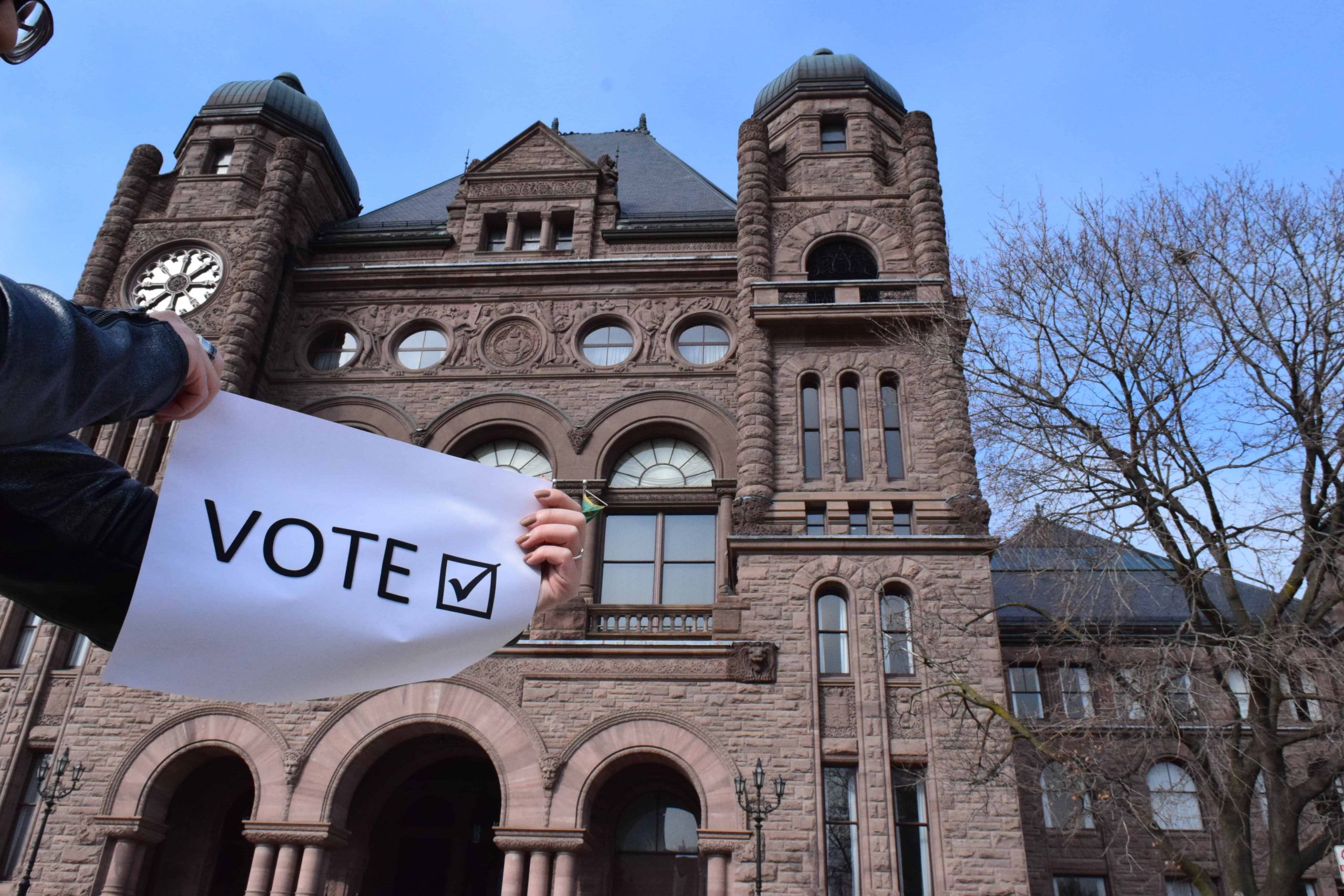Ontario’s forty-second general election was recently called for June 7, 2018. On this day, students will be among those heading to the polls to elect the government that will lead our province for the next four years.
The person who is elected, or reelected, Premier of Ontario will inherit a problematic situation; they will have to balance Ontario’s growing fiscal deficit and the need for massive infrastructure expansion, and handle concerns specific to students such as the desire for affordable post-secondary education and job growth.
Ontario requires prudent and innovative leadership to navigate the novel socioeconomic challenges of the twenty-first century.
Undergraduate education can be a financial burden on families, especially when considering rising costs of living and stagnant wages. Students alarmed about the soaring costs of undergraduate education and about Ontario’s financial situation in general should voice their concerns at the 2018 polls.
The incumbent provincial Liberal government has tried to make undergraduate education more accessible with the Ontario Student Grant, a reformation of OSAP that will offer substantial grants to eligible students.
Unfortunately, these changes will also involve the elimination of government tax credits, and professional education programs — which are usually more expensive, do not qualify for federal grants, and are typically subsidized by tax credits — will miss out.
Students planning on attending graduate school or professional studies should be especially concerned about this redistribution of government resources, as it can put Ontario students at a disadvantage in an increasingly competitive job market that demands highly specialized skills.
Students, along with the general population, have also long demanded an expansion of our subway lines and roads in order to shorten rush hours and reduce traffic congestion. The Ontario Liberals hope to satisfy these demands by spending an additional $160 billion over the next 12 years on subway infrastructure.
Although this initiative will add 31,000 jobs to our economy, it will also increase Ontario’s provincial debt by an additional $50 billion, which ought to be cause for concern.
The Financial Post describes Ontario as being the “world’s most indebted sub-sovereign borrower,” having accumulated a provincial debt of over $300 billion. To put this into context, Ontario contains a third of the population of the state of California, but has accumulated twice the debt.
A recent report by Ontario’s auditor general Bonnie Lysyk indicated that our provincial budget allocates more financial resources towards interest payments on existing debt — totaling approximately $350 million per year — in comparison to the resources allocated to post-secondary education. Lysyk also predicts that Ontario will need to cut funding from additional government programs in the future in order to compensate for high borrowing costs.
Current students should be worried about the future stability of Ontario’s economy as the province’s credit rating declines and the interest rate on its debt increases. This is all the more significant considering the concerns with how money is presently being managed in the province, which will play a part in determining how financially secure students will be once they enter the workforce and have to start paying back debts.
The Wynne government recently launched privatization of 60 per cent of Hydro One in order to fund infrastructure projects. Consequently, Ontario is expected to lose $500 million per year in the long run due to a loss in profitable dividend payments. Energy bills are also expected to rise in 2017, while Ontario has failed to determine a long-term solution to our energy crisis.
The Ontario Liberal Party currently holds a majority in Queen’s Park with an aggregate of 57 seats. Yet Wynne has seen her party’s popularity hit historic lows after being plagued by multiple scandals stretching back to the McGuinty era.
In contrast, the Progressive Conservative Party of Ontario — currently the official opposition with 29 seats — has seen a revival. This reversal of fortune can be attributed to its charismatic new leader Patrick Brown. CBC’s Éric Gernier indicated that the Progressive Conservatives were currently out-polling the Liberals by a staggering margin of 15 per cent, suggesting that we may see a leadership change come 2018.
Ultimately, it is critical that U of T students — and students across the province — closely follow the campaign promises and platforms of all political parties contesting in the forty-second Ontario election in order to determine which platform most closely aligns with their needs. Student voters have the ability to exercise control over the election’s outcome — and it is in the best interests of all Ontario citizens that students make informed decisions at the polls.
Abishnan Ravi is a third-year student at UTSC studying Human Biology and Political Science.


